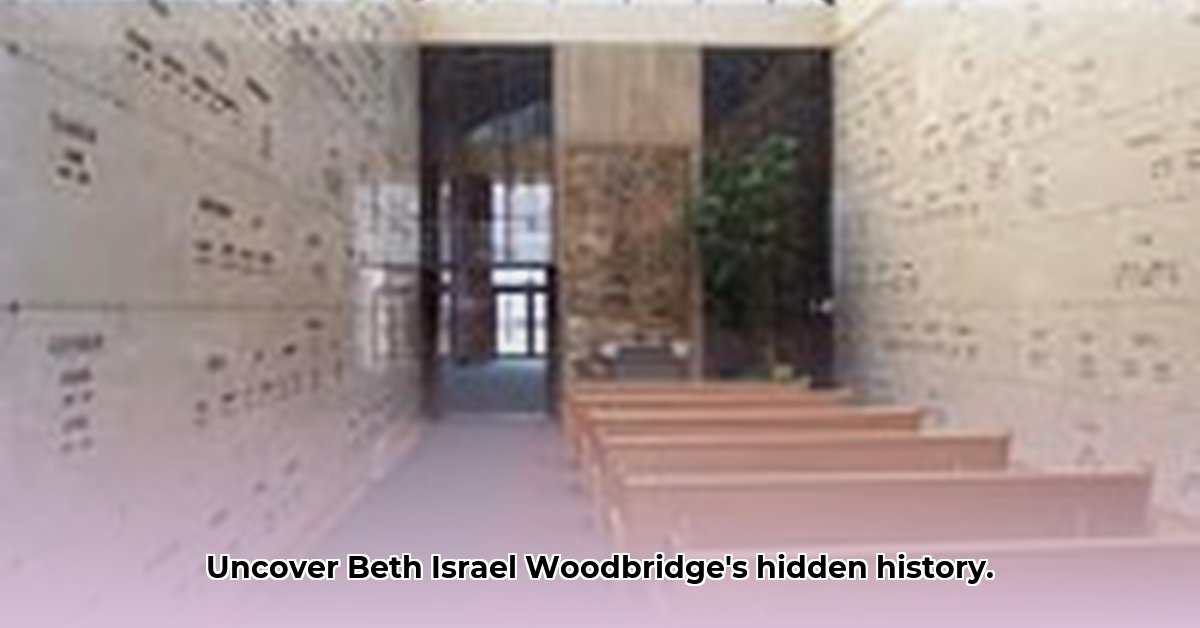
Navigating Beth Israel Cemetery Records: A Practical Guide
Finding specific burial records at Beth Israel Cemetery in Woodbridge, NJ, can be challenging due to limited digitalization. This guide offers actionable steps to locate records and proposes strategies for improving the cemetery's record-keeping system, using Beth Israel as a case study. We'll address common pain points and provide solutions to enhance efficiency and user experience, transforming record-finding from a frustrating task into a streamlined process.
Locating Burial Records at Beth Israel Cemetery: A Step-by-Step Approach
Many older cemeteries face challenges in providing readily accessible records. Beth Israel is no exception. However, utilizing a multi-pronged approach can significantly increase your chances of success in finding the information you need. Let's explore a practical step-by-step strategy:
Step 1: Online Search: Begin by searching the Beth Israel Cemetery website (if available). Even partial information, such as a name and approximate date of birth or death, can yield results. This is often the quickest initial point of reference.
Step 2: Online Genealogy Resources: Explore comprehensive genealogy websites like Find a Grave. Conduct a search incorporating "Beth Israel Cemetery Woodbridge NJ" along with the individual's name and any other relevant details. While user-submitted information may not always be perfectly accurate, it can provide valuable leads.
Step 3: Direct Contact with the Cemetery: Contact Beth Israel Cemetery directly via phone or email. Their staff possesses the most accurate and up-to-date information. Provide as many details as possible, including full names, dates, and any potential plot location information.
Step 4: Professional Genealogical Assistance: If your search proves unsuccessful, consider engaging a professional genealogist specializing in cemetery records. Their expertise and resources can be invaluable in navigating complex searches. Are you facing challenges sourcing information from historical records? Employing a professional genealogist might offer the most effective solution.
Modernizing Beth Israel's Record-Keeping: Actionable Recommendations
The current challenges in accessing Beth Israel Cemetery records highlight the need for modernization. Implementing a digital record-keeping system offers significant advantages. What are the key benefits of this type of upgrade?
1. Digitalization of Existing Records: A complete digitization project, involving scanning and indexing all existing paper records, is crucial. This step forms the foundation for an improved system. This substantial yet essential investment guarantees long-term gains in efficiency and accessibility.
2. Development of a User-Friendly Online Database: Creating a user-friendly online database, accessible 24/7, would revolutionize access to records. This would greatly enhance transparency and make information readily available to anyone, anywhere. How would this impact user satisfaction? It would increase convenience and improve user experience.
3. Implementation of GPS Mapping: Integrating GPS mapping technology would aid in precise plot location identification. This simplifies navigation for visitors and staff, improving the overall experience within the cemetery. This technology is commonly used in many modern cemeteries, and its adoption would drastically improve navigation.
The Benefits and Challenges of Digital Transformation: A Balanced Perspective
Digital record-keeping offers many advantages while presenting some potential drawbacks. A measured approach that addresses these issues is vital for a successful transition.
| Feature | Advantages | Potential Drawbacks |
|---|---|---|
| Digital Record-Keeping | Improved access, enhanced accuracy, streamlined searches, long-term cost savings | Initial investment costs, potential security risks, ongoing maintenance |
| Online Database | 24/7 accessibility, convenient search functionality | Requires ongoing maintenance and updates, potential for downtime |
| GPS Mapping | Precise location information, improved cemetery navigation | Initial investment, potential for GPS inaccuracies |
A Phased Approach to Digital Implementation: A Practical Strategy
Successfully transitioning to a digital record-keeping system requires a well-defined implementation strategy. Avoid overwhelming the process by adopting a phased approach:
Phase 1: Assessment: Conduct a thorough assessment of the current system, identifying strengths, weaknesses, and specific needs.
Phase 2: System Selection: Research and select appropriate software and hardware solutions tailored to the size and needs of Beth Israel Cemetery.
Phase 3: Pilot Program: Implement a pilot program to test the chosen system with a limited dataset before full-scale deployment, allowing for adjustments and improvements.
Phase 4: Staff Training: Ensure comprehensive training for all staff members to ensure proficient use of the new system.
Phase 5: Monitoring and Optimization: Continuously monitor the system's performance, making necessary adjustments and optimizations to maximize efficiency and user experience.
Conclusion: Unlocking the Potential of Beth Israel Cemetery
By adopting a modern digital record-keeping system, Beth Israel Cemetery can significantly enhance its services and improve the experience for both families and staff. The transformation will result in increased efficiency, improved user experience, and a more respectful manner of handling sensitive information. The investment in modernization will yield significant long-term benefits for the community and those entrusted to its care.